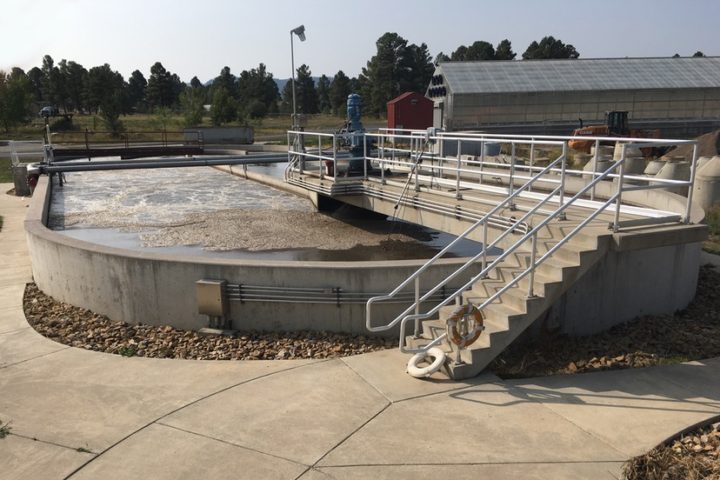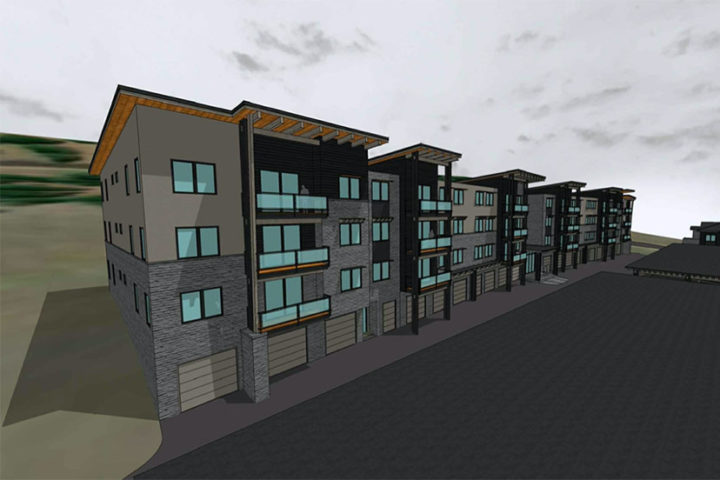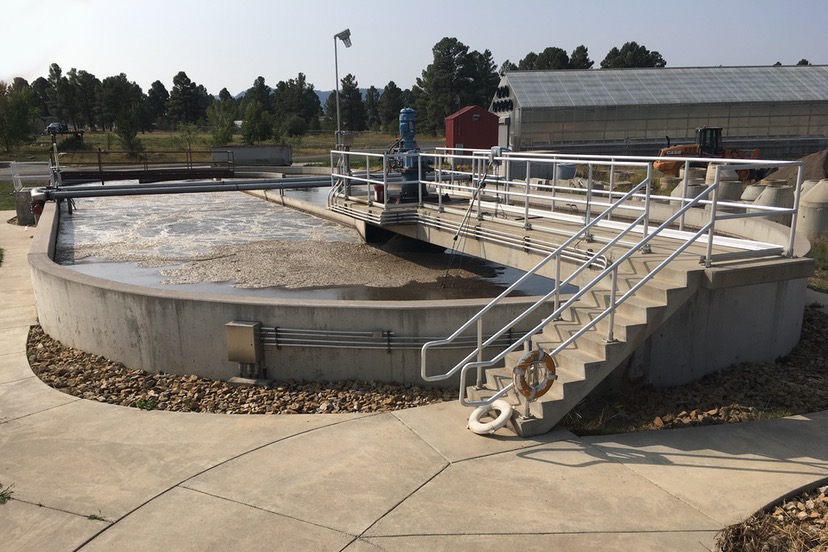As I’ve suggested previously in this editorial series, most of the elected officials and staff advisors who approved the idea of building a pipeline to pump the town’s sewage uphill for about seven miles to the Vista Waste Water Treatment Plant, were honestly trying to save the taxpayers money.
Six years later, and with the benefit of hindsight, we can probably agree it was a crazy idea. But for some reason, it didn’t seem crazy to the decision-makers in 2012.
The original plan, prior to 2012, involved a sequencing batch plant similar to the plant at Vista, which would use bacteria and mechanical processes to purify the town’s sewage and release it into the San Juan River, where it would be diluted with clean mountain river water, and become harmless to the environment.
The original plan had some drawbacks. A sequencing batch plant was priced at about $7 million; it would be built close to the high school, west of the existing lagoons, and above the level of the 500-year flood plain. But it probably would have served the community for 40 or 50 years.
The pipeline option also looked like a long-term alternative, and it was originally priced as about $5 million. A pump station would have a much smaller footprint that a sequencing batch plant, and the system would reportedly make use of ‘excess capacity’ at the Vista plant.
But in fact, the pipeline has been a continuous series of headaches ever since it came online. As we look back over the financial cost of those headaches, it has cost well over $7 million. And that’s not counting the amount of anxiety and frustration experienced by the Town staff.
We also discussed the fact that Pagosa Area Water and Sanitation District (PAWSD) is being pressured by the Colorado Department of Public Health and Environment (CDPHE) to upgrade the Vista plant. As water quality regulations have become more strict, the Vista plant has not been able to keep pace with the new requirements. In particular, the Vista plant is releasing, into the environment, nitrogen compounds that were allowed when the plant was first built, but are no longer permitted in waste water discharge.
Because the Vista plant does not discharge into a flowing stream, the nitrogen compounds do not get sufficiently diluted, and are presumed — by CDPHE — to be ecologically damaging.
The required upgrade will reportedly cost PAWSD customers about $20 million — possibly even $25 million — making it one of the most expensive government-funded projects in Archuleta County history.
If the Pagosa Springs Sanitation General Improvement District (PSSGID) determines that the pipeline is a ‘lemon’ and ought to be abandoned, one obvious alternative is the construction of a sequencing batch plant to replace the pipeline. Cost? $20 million?
One positive note. Because a downtown batch plant would discharge into a flowing stream, the nitrogen compounds would be safely diluted. Presumably.
Could PAWSD and PSSGID collaborate, somehow, on a new sequencing batch plant downtown, and use the Vista plant as merely a ‘pretreatment’ facility… and then send the uptown sewage downhill through the existing pipeline to the new downtown treatment plant?
Would CDPHE accept such a solution?
Who would pay for the new batch plant?
Will such a potential solution be discussed at this Thursday’s PAWSD Board meeting?

One more question: If the existing pipeline were to be used to flow the uptown waste water downhill to the San Juan River, would the pipeline be large enough? I believe about 75% of the sewage currently being treated at the Vista plant comes from uptown customers.
From the April 6 PSSGID Board meeting packet, regarding pump failures as Pump Stations #1 and #2t:
Since the Project was completed and put in operation, the GID has experienced multiple, repeated failures of the pumps in PS #1 and #2. All the pumps have been replaced at least once, if not more times, over the years. Pump failures are largely caused by cavitation, pressure, and wear and tear, sometimes occurring only a few months or less after being newly deployed. Failures are seen in the impellers, seals, lifting of cooling jackets and more. Some have been able to be rebuilt and others are too damaged to be rebuilt and redeployed. It should be noted that this is a lengthy process requiring the pump to be taken to Farmington to All American Technical and perhaps waiting on seals or other parts to arrive, to be reassembled, and brought back to Pagosa…
…Currently, each pump station is operating with one pump train each, with a wet well pump and a dry pit pump. A failing pump (which was a rebuilt one) was replaced on March 17 with another rebuilt pump. There are no spare pumps on hand (rebuilt or new). The GID has placed an order on February 24th for two new pumps from Falcon Environmental (supplier of Sulzer pumps); these are projected to take 4-6 weeks from order date to arrive and should be delivered the week of March 28th.
Over the weekend, I received the following suggestion from a Daily Post reader and part-time Pagosa resident:
Hello Bill, my suggestion is to put a moratorium on high density buildings in the downtown area. This means no more hotels, motels, or low income housing, condos, etc. The infrastructure is not there for more buildings. Until the sewage system problem is fixed, a moratorium should be placed on any new buildings…
Rita Peck
Wimberley, TX
As a matter of fact, we have developers working on several downtown projects.
A proposed 80-unit hotel expansion project at the Springs Resort.
A proposed 64-unit workforce housing project on three lots along Apache Street.
A proposed 62-unit condo and apartment project on Hot Springs Boulevard.

Ms. Peck makes a reasonable suggestion. Why, indeed, would the Town government expect to allow more than 200 new sewer hookups, when we find ourselves in an emergency situation?

